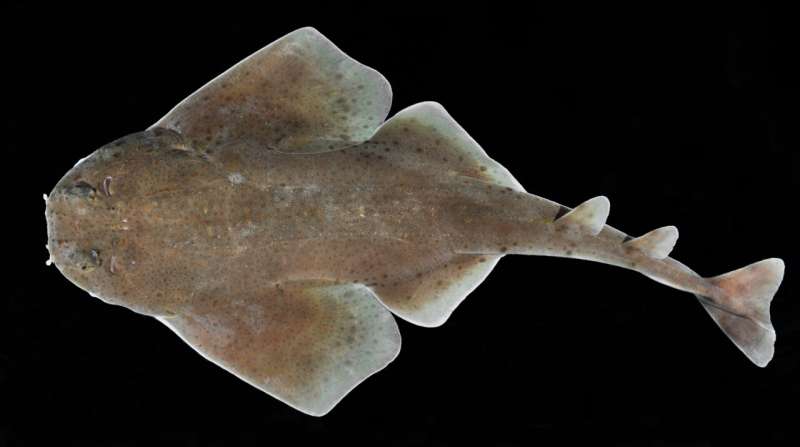Squatina mapama, new species from Panama: First report of an angel shark from the Central American Caribbean

Between 2010 and 2011, two research expeditions sponsored by the Spanish government exploring the biodiversity of benthic organisms—those living on the ocean floor—on Central America's Pacific and Caribbean coasts, came across a new shark species. The Squatina mapama n. sp., collected off the Caribbean coast of Panama became the first record of an angel shark from the Central American Caribbean. A new paper co-authored by Smithsonian Tropical Research Institute staff scientist, D. Ross Robertson, described and named it.
Many angel shark species are considered endangered by the International Union for the Conservation of Nature. Their genus, Squatina, goes way back, most likely originating in the Cretaceous (from about 145 to 66 million years ago).
Squatina are flat-bodied sharks resembling stingrays, and generally speaking, the different species are not easy to distinguish from each other with the naked eye. In fact, S. mapama (named after the Spanish government fisheries organization) looks much like another species that lives in the same part of the Caribbean, and also occurs in Panama: Squatina david. However, aside from a number of subtle physical differences between them, genetic analyses helped to establish them as a separate species, and distinct from other new world angel sharks.
In reference to one of the distinguishing characteristics of S. mapama—a short and narrow line of small scales or dermal denticles—the authors suggested giving this new species the common name "small-crested angel shark".
The small-crested angelshark is the fourth new species of Squatina identified in the Western Atlantic in the last decade, and although the total number of species in the genus has not been established with certainty, this study reveals the forensic value of genetic analyses for understanding the true biological diversity of a genus with various cryptic species (those that have very similar appearances).
More information: Squatina mapama n. sp., a new cryptic species of angel shark (Elasmobranchii: Squatinidae) from the southwestern Caribbean Sea, DOI: 10.5281/zenodo.5806693
Provided by Smithsonian Tropical Research Institute

















